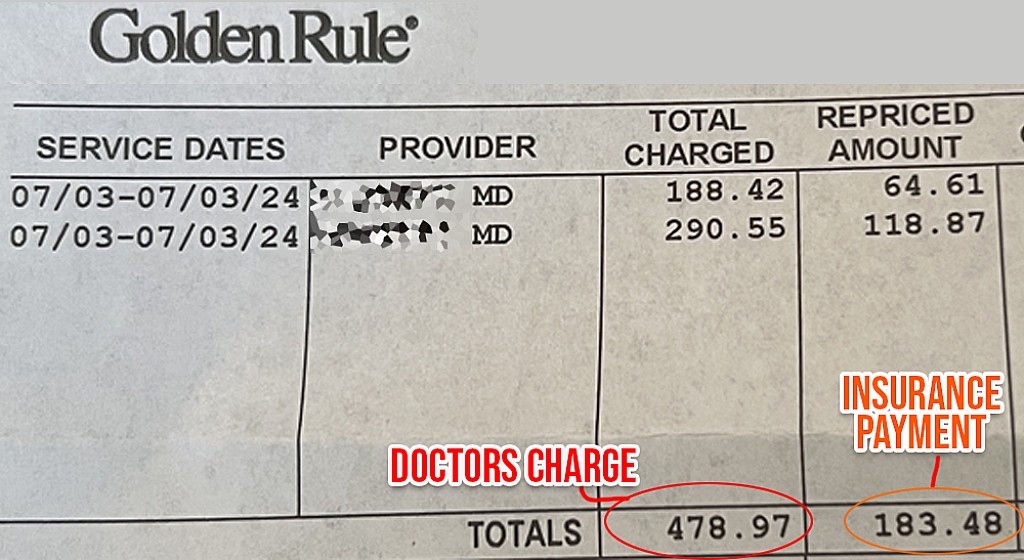John F. Groom , United States Jul 24, 2024
As someone who recently took a 14 month long trip around the world to set up Global Fast Fit, visit and recruit trainers, and meet up with team members, I had a unique opportunity to investigate health care systems around world. This post is the first in a series about my personal experiences with the medical systems in the US and around the world.
There are many factors to be considered in how good a health care system is; cost of course, but also the level of the facilities, the skills of the medical staff, how quickly you can get an appointment, and generally how cumbersome the process is.
A note about costs. Nothing is “free”. Doctors, nurses, and administrators all get paid. No one delivers medical supplies or equipment to hospitals for free. In many countries, especially in Europe, high taxes, especially very high VAT taxes, are used to fund the medical system. So you pay for someone else’s medical care when you pay 20% in VAT for your pants or dress. In particularly rich small countries such as Qatar or the UAE, oil revenue is used to provide “free” medical care to citizens, but those that qualify as “citizens” may only form a very small part of the actual population. All the expat laborers must pay for their own medical care, or have it provided by their employer. Many countries have systems where some basic care is provided through taxation, but other things must be paid for by the patient.
Medical care in the US can be very good if you have a rare disease that requires some cutting edge treatment. Or okay if you have a very good form of employer paid health insurance. Bad to terrible for everyone else.
The US has a mix of private insurance, government subsidized insurance through the Affordable Care Act, government direct insurance policies for the poor and older Americans through Medicaid and Medicare, and self-pay, The result is a mess, but ends up being very expensive for individuals, companies, and taxpayers.
I have a policy through Golden Rule, a division of United Health Care, one of the biggest US health insurers. I have attached a photo of my most recent bill. For a routine annual skin care check, the doctor charged US $479, which is what I would have to pay if I was not using insurance. Golden Rule “adjusted” the cost down to $183, which is what they believe the charge should be. So if the charge should be $183, why is the doctor trying to charge $479? This visit lasted, at most, 15 minutes.
I’ll probably have to spend time arguing with the doctor’s office about what I owe them. I paid $40 during the visit as a co-pay, but since my insurance has a very high deductible they actually did not pay any of the bill. I should owe $143, which is what my insurance company would have paid less the amount I’ve already paid. But they will probably try to charge me the self-pay rate of $479, since I’m paying and the insurance company did not pay. Does any of this make any sense? Of course not. The whole system is really driven by fear of lawsuits, government regulations, and very complex insurance company rules. What should be a relationship between doctor and patient gets pulled in a million different directions, resulting in frustration for all involved.
Why should people not using insurance pay more than those with insurance for the same service? Its actually much cheaper to service people that are paying directly as insurance claims don’t have to be filed and processed. When you get a haircut does the price you pay depend on whose paying for it? When you buy a house does the price change depending on who is financing the purchase? Of course not; only with health insurance do you get huge changes in what a service costs depending on who is paying for it.
I actually waited for two months to get this routine appointment at a dermatologist. And that was a month faster than my regular dermatologist could see me. The best way to describe American medical care is expensive, complex, often involving lengthy waits for an appointment, and rushed. Most typically you’ll also be kept waiting as doctors offices overbook their time. The forms you have to fill out? That will be the subject of another post.
The good news in all this? If you do Global Fast Fit regularly, you won’t need to see doctors so often.
 Login with Google
Login with Google

Login to Comment